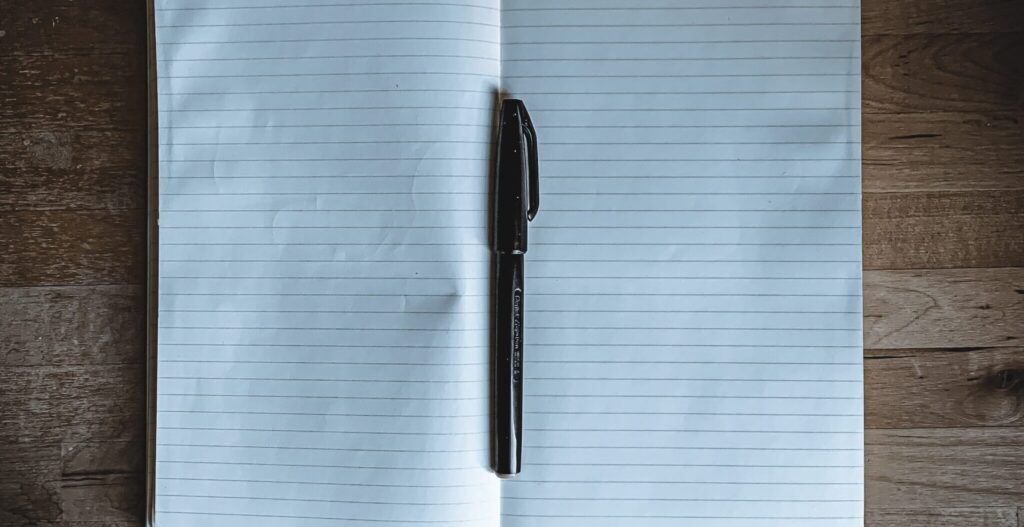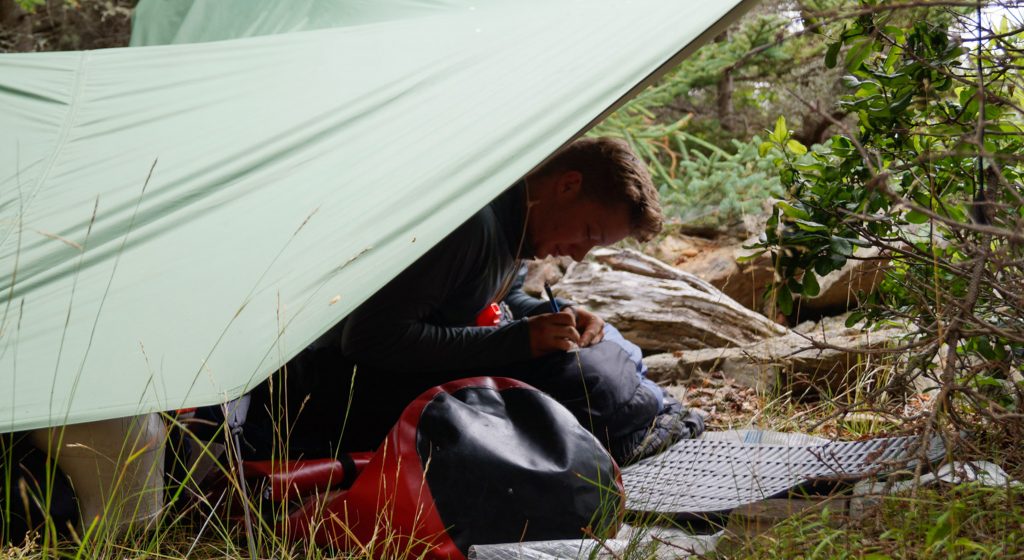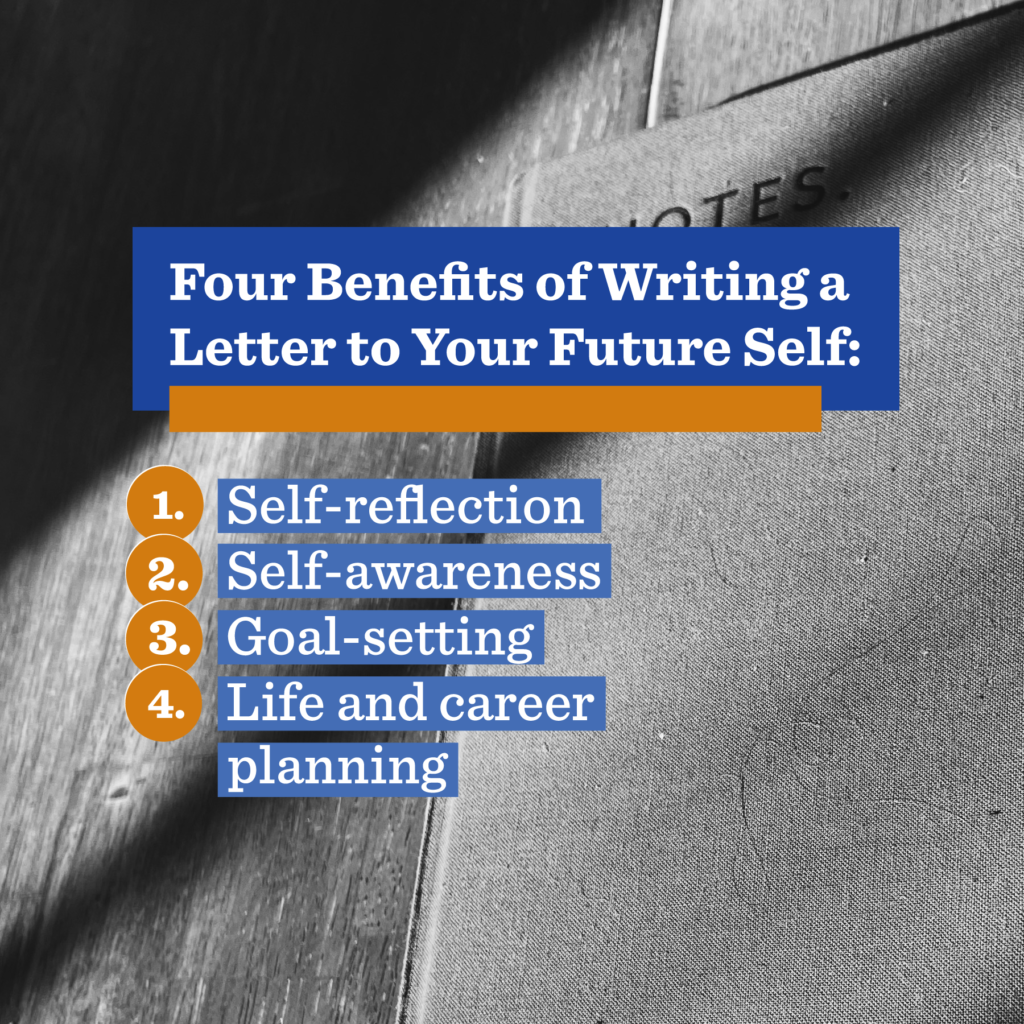One cold February day while I was still in college, my roommate brought in our mail, and for the first time in years, I had a handwritten letter addressed to me. The return address was that of a program I had done the previous summer. While not run by Outward Bound, the program was a travel-based educational expedition similar to Outward Bound gap year semester programs.
As a participant that summer, I was encouraged to write a letter to my future self. A few years later, I now facilitate the same exercise for my students on Outward Bound wilderness expeditions.
Back on that cold February day, in the instant that I recognized the return address and my own handwriting, a summer’s worth of memories flooded back in. I broke down in tears before tearing open the envelope.

Photo by Scott Gummerson
Why Write a Letter to Your Future Self?
On Outward Bound courses, we invite students to write a letter that’s delivered to them six months post-course. Writing a letter to your future self is a powerful exercise. It forces you to both look inward at your present self and consider your future existence.
Reason #1: To Reflect on Your Present Self
The first side of this exercise is to reflect on your present self. One of the goals of any Outward Bound course is to provide the time and structure for self-reflection. A letter to yourself can be one of the most in-depth opportunities to do this. In the busyness and chaos of daily life, it feels like there is always something more important to do than taking an hour to think about yourself and take stock of your life. However, spending the time and space to let these thoughts flow offers a giant step towards self-awareness. Even though the letter is for the future, writing it demands that you be present.

Reason #2: To Consider Your Future Self
The second side of this exercise is the consideration of your future self.
Where will “future you” be?
What will you be doing?
Do you have specific goals?
What will you need to hear?
This part of the reflection allows you to cultivate intention and awareness as you transition back into daily life.
For example, in my letter, I wrote, “When you finish traveling I hope you remain not-dependent on your phone and social media. I hope you’re going to the gym in the afternoons and doing stretching exercises whenever you watch TV.” Writing a six-month letter is a great time to set goals and plan a trajectory.

Photo by Amber Boludc
Writing a six-month letter is a great time to set goals and plan a trajectory.
Reading a Letter from Your Past Self
I read the letter that I had so carefully written in what now felt like a different lifetime. It was remarkable how I had completely forgotten not just the contents of the letter, but that I had even written it at all. I immediately felt reconnected to the experience that I had that summer. My crew’s group chat online started blowing up, as others received their letters and wanted to share thoughts and feelings on their letters. Partially, my tears were because I missed the trip. I missed being in flow with my crew and I missed being on a whirlwind adventure. Moreover, my tears were because I realized for the first time (and all at once) how impactful and formative that program had been.

Reopen the Reflective Space That Was Once So Naturally Available
Reading a six-month letter reminds you where you’ve been and highlights your growth since then. It’s a time to check up on your six-month-old intentions versus today’s reality. Not to mention, the actual letter itself is a documentation of your inner thoughts, hopes and self-perception at that time.
Reflection is a vital step in absorbing and retaining the learnings from any experience. For students, when a course ends and they return to normal life, it can be easy for them to pack it away mentally and chock it all up as just a great memory. Reading a six-month letter reopens you to the experience in a very positive sense.
Reflection is a vital step in absorbing and retaining the learnings from any experience.
My college roommates hovered around me that February night, asking if I was okay. As I sobbed over this piece of paper, it was impossible to explain the gravity of what I had received. I was growing up, taking better care of myself, desiring to be a better person—and here was the evidence. I even wrote in the letter, “When you read this letter and look through pictures, you’re going to cry, but don’t ever forget why. You’re so sad it’s over… because of how absolutely amazing it was.” No amount of words or wishing could bring back the trip itself, but with the arrival of this forgotten letter, my experience was reinforced.

Photo by Alice Burgess
How to Do this Exercise
While an Outward Bound course is a great space to try this exercise, you don’t necessarily need to be on an expedition to give it a go. Logistically, the easiest way to do this at home is to type your letter into an email and “schedule send” to yourself for a later date. A handwritten letter can be put in an envelope and given to a trusted friend or tucked away on a bookshelf, then set a reminder on your phone for the date you want to open it.
Find a time to write this letter to your future self when you are alone and free from distraction. Allow at least an hour—there is no need to rush. Feel free to write whatever comes up. There doesn’t need to be a prescribed structure to the letter. These prompt questions may help guide you: What in your life are you proud of right now? In what areas of your life do you desire growth? Where do you see yourself in six months? Do you have specific goals? What are your core guiding values? I encourage you to set aside expectations of what the letter “should be” and speak to yourself from the heart. Your future self will thank you for it.
About the Author
Addie Hurwitz is a field Instructor for the North Carolina Outward Bound School, primarily out of Table Rock base camp. Addie has a degree in Recreation, Park, and Tourism Management from Penn State University. She loves working in experiential education and takes similar joy from studying its academic side. When not on a course, Addie is likely skiing or traveling.
OTHER POSTS YOU MAY LIKE
Read More
Read More
Read More




